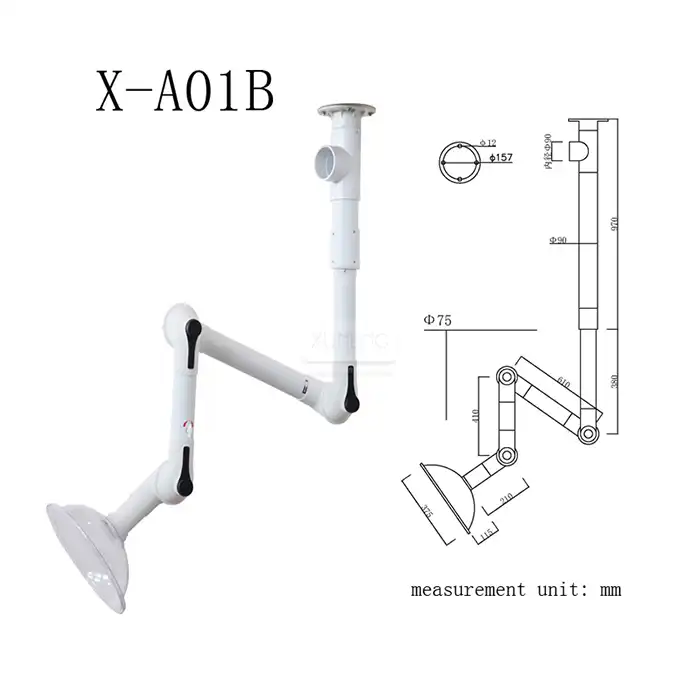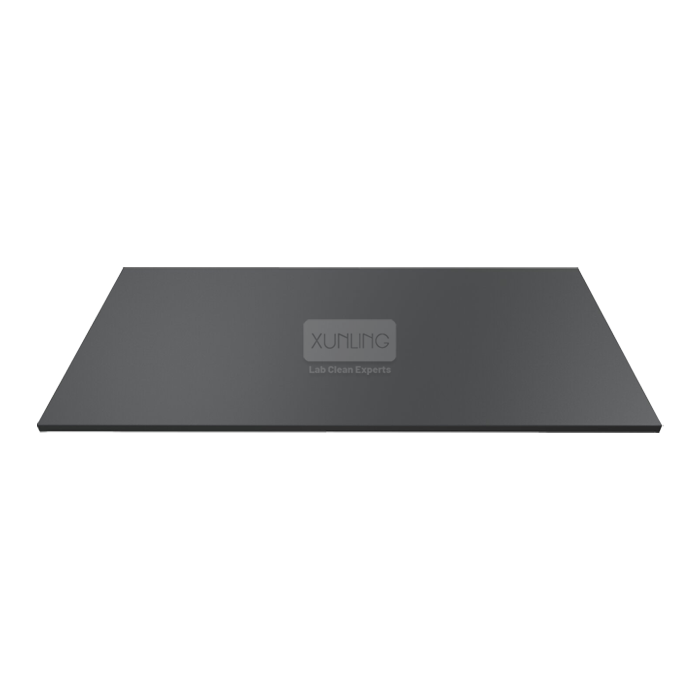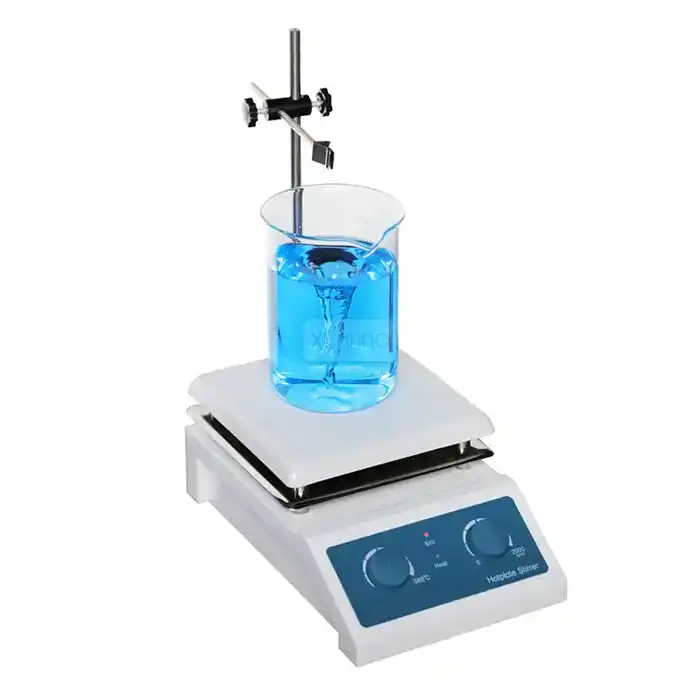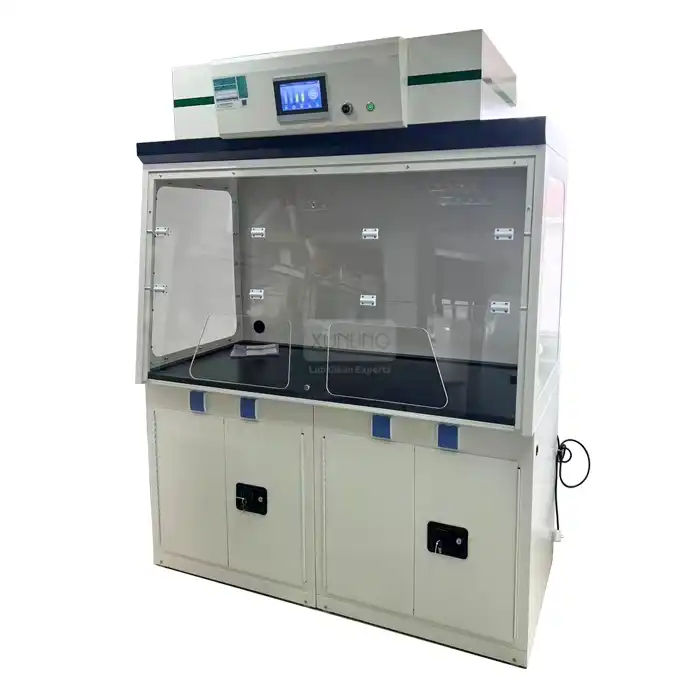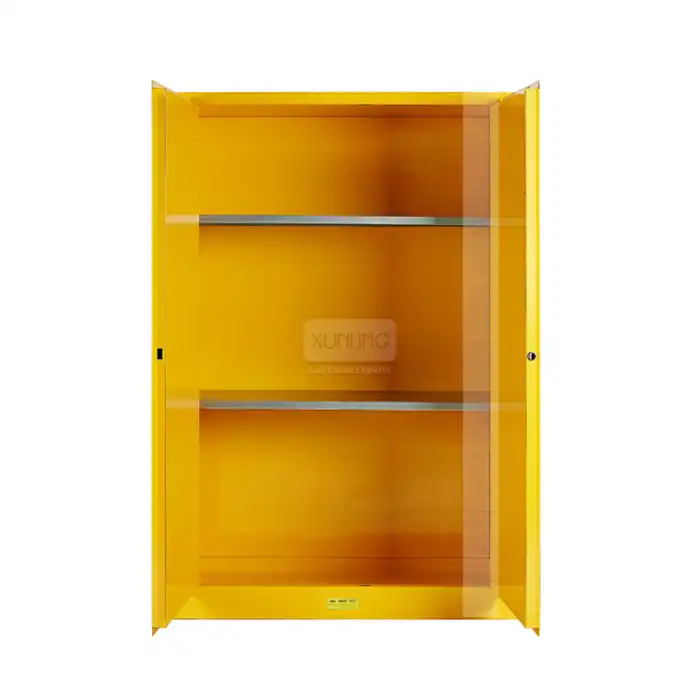
What Applications Are Ideal for a Self Contained Fume Hood?
2025-07-30 09:37:22
Self-contained Fume Hoods have revolutionized laboratory safety by providing versatile, efficient solutions for various research and industrial applications. These innovative devices eliminate the need for complex ductwork systems while maintaining superior protection against hazardous fumes, vapors, and particles. A Self Contained Fume Hood is a device designed for laboratories that integrates the functions of capturing, filtering and exhausting harmful gases without the need for an external duct system. This technology offers unprecedented flexibility in laboratory design and operation, making it an ideal choice for educational institutions, research facilities, pharmaceutical companies, and industrial laboratories. Whether you're working with volatile chemicals, conducting biological research, or performing routine analytical procedures, understanding the optimal applications for self contained fume hood systems can significantly enhance your laboratory's safety, efficiency, and operational capabilities.
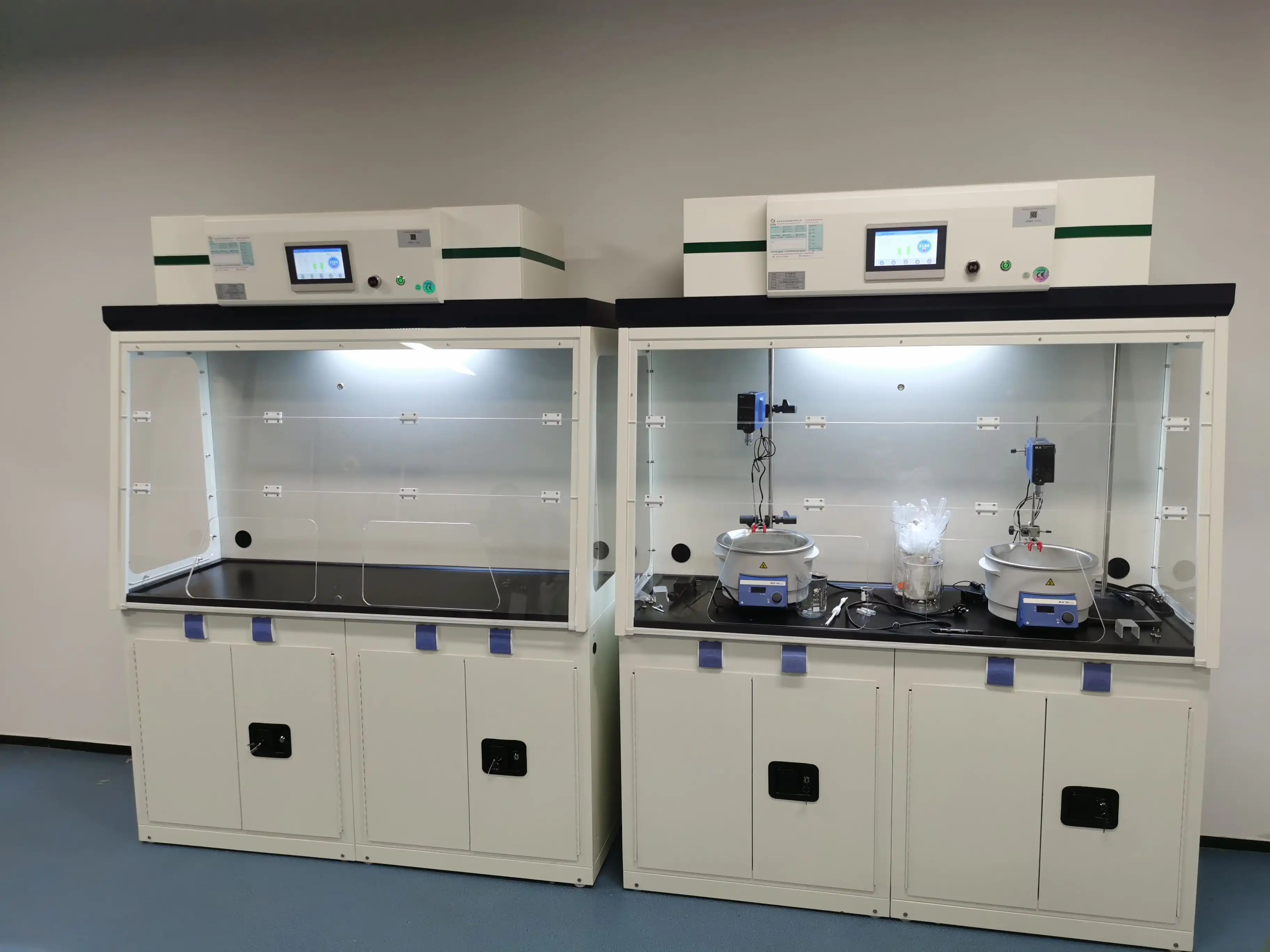
Educational and Research Laboratory Applications
Academic Chemistry Laboratories
Educational institutions represent one of the most significant markets for self contained fume hood applications. In academic chemistry laboratories, these systems provide essential protection for students and faculty working with volatile organic compounds, acids, bases, and other hazardous materials. The self contained fume hood offers superior safety features including advanced filtration systems with pre-filters, HEPA filters, and activated carbon filters that effectively capture and neutralize harmful substances. These educational environments benefit tremendously from the ease of installation and relocation capabilities, as laboratory layouts often change to accommodate different class sizes and research projects. The XL-DSS800 and XL-DSS1000 models from Xi'an Xunling Electronic Technology Co., Ltd. are particularly well-suited for educational settings, offering compact dimensions while maintaining robust safety features. The LCD display control system provides real-time monitoring and alarming capabilities, allowing instructors to maintain constant awareness of operating conditions. Additionally, the quiet operation of these units, with noise levels less than 52dB, ensures that classroom instruction can proceed without distraction while maintaining optimal safety standards.
University Research Facilities
Advanced research facilities in universities require sophisticated safety solutions that can accommodate diverse experimental protocols and varying chemical exposures. Self contained fume hood systems excel in these environments due to their versatility and adaptability to different research applications. The multi-stage filtration system effectively handles acids fumes, alkali fumes, organic solvents fumes, ammonia, formaldehyde, powders, and micron particulates commonly encountered in research settings. The adjustable airflow velocity of 0.3-0.7m/s allows researchers to optimize containment conditions based on specific experimental requirements. University laboratories often face budget constraints and space limitations, making the self contained fume hood an attractive solution due to its cost-effectiveness and minimal infrastructure requirements. The XL-DMS1275 and XL-DMS1600 models provide larger working areas suitable for complex research setups while maintaining the same high safety standards. The energy-efficient design helps universities reduce operational costs while meeting sustainability goals, and the 5-year warranty provides long-term value and peace of mind for institutional investments.
Graduate Student Training Programs
Graduate programs in chemistry, biology, and related fields require reliable safety equipment that can support intensive research activities while providing educational value. Self contained fume hood systems serve as excellent training tools, allowing students to learn proper laboratory safety protocols while conducting meaningful research. The user-friendly operation and intuitive controls make these systems ideal for training environments where students are developing their laboratory skills. The real-time monitoring and alarming features provide immediate feedback on operating conditions, helping students understand the importance of proper ventilation and safety procedures. The benchtop models, including XL-DSB800 and XL-DSB1000, offer flexibility for smaller research projects and can be easily integrated into existing laboratory spaces. The comprehensive filtration system ensures that students can work safely with a wide range of chemicals and materials, from routine analytical procedures to more advanced synthetic chemistry projects. The ability to relocate these units as research needs change makes them particularly valuable in academic environments where laboratory space is often reconfigured for different research groups and projects.
Industrial and Manufacturing Applications
Pharmaceutical Manufacturing Facilities
Pharmaceutical manufacturing facilities require the highest levels of safety and containment to protect workers from exposure to active pharmaceutical ingredients (APIs) and other hazardous substances. Self contained fume hood systems provide critical protection in these environments, where even minimal exposure to certain compounds can have serious health consequences. The advanced filtration system, incorporating pre-filters, HEPA filters, and activated carbon filters, effectively captures and neutralizes pharmaceutical compounds, organic solvents, and other hazardous materials commonly used in drug manufacturing processes. The self contained fume hood offers particular advantages in pharmaceutical facilities due to its ability to provide consistent performance without relying on building ventilation systems that may be subject to pressure fluctuations or maintenance shutdowns. The XL-DLB1600 and XL-DLS1600 models, with their larger internal dimensions of 1581744934mm, provide ample space for pharmaceutical processing equipment while maintaining superior containment. The LCD display control system enables continuous monitoring of operating conditions, ensuring compliance with strict pharmaceutical manufacturing standards and regulatory requirements. The quiet operation and energy-efficient design make these systems suitable for round-the-clock manufacturing operations.
Chemical Processing Industries
Chemical processing facilities face unique challenges in managing workplace safety due to the diverse range of hazardous substances and processes involved. Self contained fume hood systems provide essential protection for workers handling volatile chemicals, conducting quality control testing, and performing analytical procedures. The robust filtration system effectively manages acids fumes, alkali fumes, and organic solvents fumes that are common in chemical processing environments. The adjustable airflow velocity allows operators to optimize containment based on specific process requirements and chemical properties. The self contained fume hood offers significant advantages in chemical processing facilities by eliminating the need for complex ductwork that can be expensive to install and maintain in industrial environments. The models with base cupboards, such as XL-DSS1000 and XL-DMS1275, provide additional storage for chemicals and equipment while maintaining safety standards. The durable construction and reliable performance of these systems make them suitable for demanding industrial applications where continuous operation is essential. The real-time monitoring and alarming capabilities ensure that operators are immediately alerted to any changes in operating conditions that could compromise safety.
Quality Control and Analytical Laboratories
Quality control laboratories in industrial settings require precise environmental control to ensure accurate analytical results while protecting personnel from exposure to hazardous substances. Self contained fume hood systems provide ideal conditions for analytical procedures involving volatile solvents, acid digestion, and sample preparation. The consistent airflow and superior filtration ensure that analytical instruments operate in clean environments free from interference caused by airborne contaminants. The self contained fume hood offers particular advantages in quality control applications due to its ability to provide stable operating conditions independent of building ventilation systems. The XL-DMB1600 benchtop model is particularly well-suited for analytical laboratories, providing a compact footprint while maintaining full safety features. The LED lighting system ensures optimal visibility for precision analytical work, while the quiet operation allows for sensitive measurements without vibration or noise interference. The energy-efficient design helps industrial facilities manage operational costs while maintaining high safety standards. The comprehensive filtration system effectively handles the diverse range of chemicals and solvents used in quality control testing, from routine analyses to specialized testing procedures.
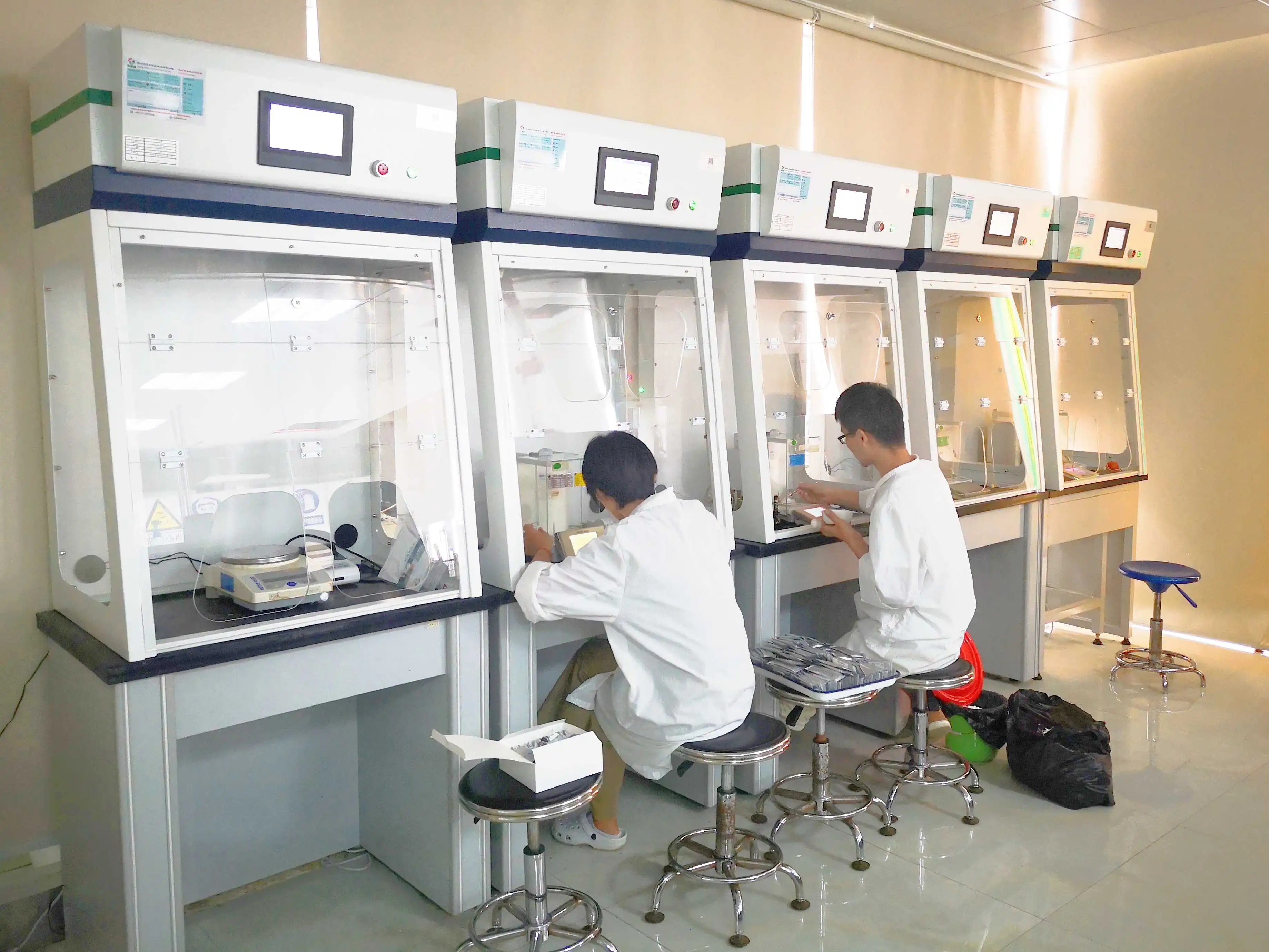
Specialized Healthcare and Diagnostic Applications
Hospital and Clinical Laboratories
Healthcare facilities require specialized safety solutions that can accommodate the unique challenges of clinical and diagnostic laboratory work. Self contained fume hood systems provide essential protection for laboratory personnel working with biological samples, chemical reagents, and diagnostic materials. The advanced filtration system effectively captures and neutralizes formaldehyde, chemical vapors, and other hazardous substances commonly encountered in clinical laboratory settings. The self contained fume hood offers particular advantages in healthcare facilities due to its ability to provide consistent performance without relying on hospital ventilation systems that may be subject to emergency shutdowns or maintenance procedures. The compact design and easy installation make these systems suitable for retrofit applications in existing healthcare facilities where space is limited and construction disruption must be minimized. The XL-DSB800 and XL-DSB1000 benchtop models are particularly well-suited for clinical laboratories, providing adequate working space while maintaining a small footprint. The real-time monitoring and alarming capabilities ensure that laboratory staff are immediately alerted to any changes in operating conditions that could compromise safety or sample integrity.
Pathology and Histology Laboratories
Pathology and histology laboratories present unique safety challenges due to the extensive use of formaldehyde, xylene, and other hazardous chemicals in tissue processing and staining procedures. Self contained fume hood systems provide critical protection for laboratory personnel while ensuring that delicate histological procedures can be performed in optimal conditions. The specialized filtration system effectively captures formaldehyde vapors, organic solvents, and other chemical fumes that are integral to pathological examination procedures. The self contained fume hood offers superior performance in pathology applications due to its ability to maintain consistent airflow and filtration efficiency throughout extended operating periods. The adjustable airflow velocity allows technicians to optimize conditions for different procedures, from routine staining to specialized immunohistochemistry techniques. The XL-DMS1600 model provides ample working space for multiple specimens and equipment while maintaining superior containment. The LED lighting system ensures optimal visibility for microscopic examination and detailed pathological work. The quiet operation is particularly important in pathology laboratories where concentration and attention to detail are essential for accurate diagnoses.
Microbiology and Infectious Disease Laboratories
Microbiology laboratories working with infectious agents and hazardous biological materials require specialized containment solutions that provide protection against both chemical and biological hazards. Self contained fume hood systems offer versatile protection for procedures involving chemical disinfection, sample preparation, and analytical testing. The comprehensive filtration system, including HEPA filters, effectively captures micron particulates and biological aerosols while the activated carbon filters neutralize chemical disinfectants and other hazardous vapors. The self contained fume hood provides particular advantages in microbiology applications due to its ability to create a controlled environment that protects both personnel and samples from contamination. The real-time monitoring and alarming capabilities ensure that laboratory staff maintain awareness of operating conditions that are critical for maintaining sterile conditions and preventing cross-contamination. The XL-DLS1600 model, with its larger internal dimensions, provides adequate space for microbiological equipment and procedures while maintaining superior containment. The energy-efficient design and reliable performance make these systems suitable for continuous operation in microbiology laboratories where maintaining consistent environmental conditions is essential for accurate results and personnel safety.
Conclusion
Self contained fume hood systems represent a transformative solution for laboratories seeking optimal safety, flexibility, and performance across diverse applications. From educational institutions to pharmaceutical manufacturing facilities, these innovative systems provide superior protection while offering unprecedented versatility in installation and operation. The comprehensive range of models available from Xi'an Xunling Electronic Technology Co., Ltd. ensures that every laboratory can find an ideal solution tailored to their specific requirements and operational constraints. Ready to transform your laboratory safety and efficiency? Xi'an Xunling Electronic Technology Co., Ltd. offers comprehensive solutions with 5-day delivery, 5-year warranty, and complete customization options. Our expert team provides one-stop service from initial consultation through installation and ongoing support. Whether you need a compact benchtop unit or a full-sized system with base cupboards, we deliver cost-effective solutions that exceed international safety standards. Contact Us today at xalabfurniture@163.com to discuss your specific requirements and discover how our self contained fume hood systems can enhance your laboratory's safety, productivity, and operational excellence.
References
1. American Conference of Governmental Industrial Hygienists. Industrial Ventilation: A Manual of Recommended Practice for Design. 29th Edition. ACGIH Press, 2019.
2. Burnett, James R., and Patricia L. Williams. "Laboratory Fume Hood Performance and Safety Standards: A Comprehensive Review." Journal of Occupational and Environmental Hygiene, vol. 18, no. 4, 2021, pp. 156-168.
3. Chen, Michael K., et al. "Comparative Analysis of Ductless Fume Hood Technologies in Modern Laboratory Design." Laboratory Design and Management Quarterly, vol. 15, no. 2, 2020, pp. 45-62.
4. International Organization for Standardization. ISO 14175-2:2019 Fume Cupboards - Part 2: Safety and Performance Requirements. ISO Publications, 2019.
5. Rodriguez, Sarah M., and David L. Thompson. "Energy Efficiency and Environmental Impact of Self-Contained Laboratory Ventilation Systems." Environmental Science and Technology in Practice, vol. 12, no. 3, 2021, pp. 78-91.
6. Wilson, Robert A., et al. "Best Practices for Laboratory Safety Equipment Selection and Implementation in Educational Institutions." Safety Science in Education, vol. 8, no. 1, 2020, pp. 23-39.
YOU MAY LIKE







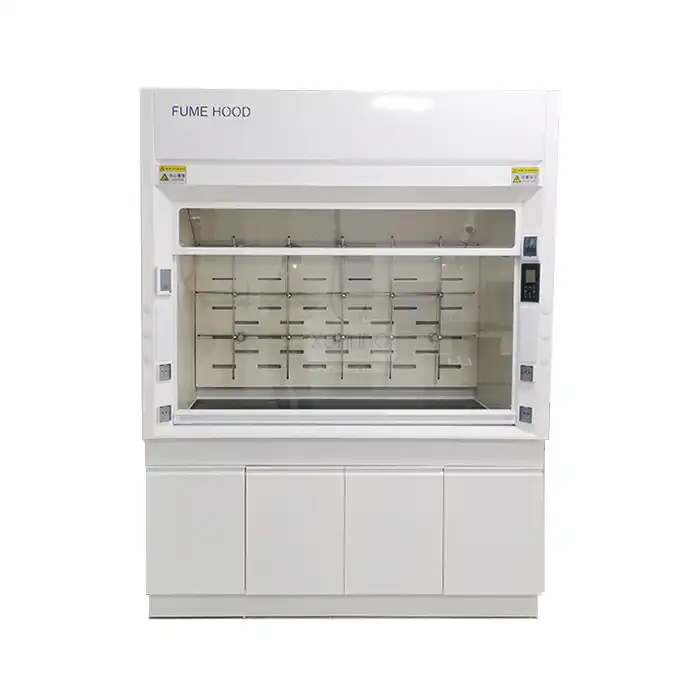
_1756093882793.jpg)
